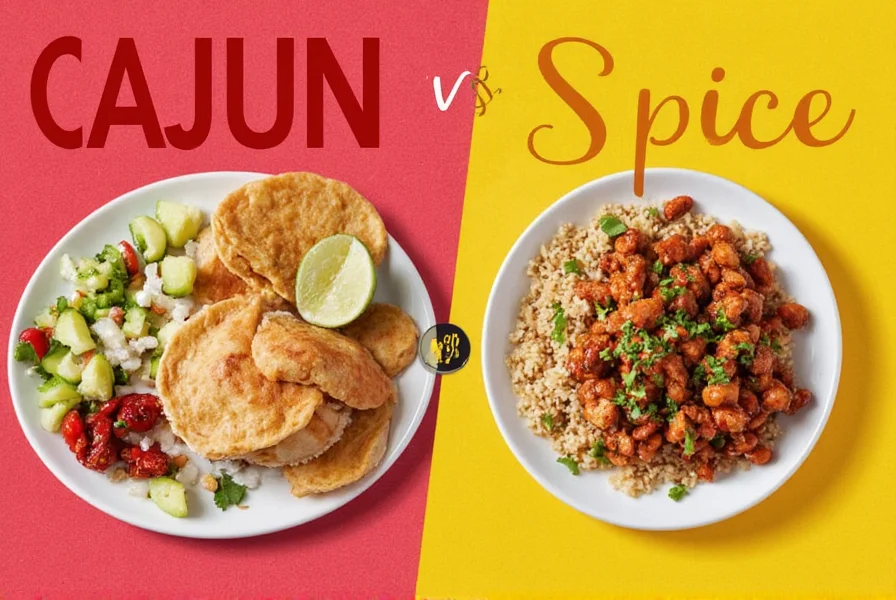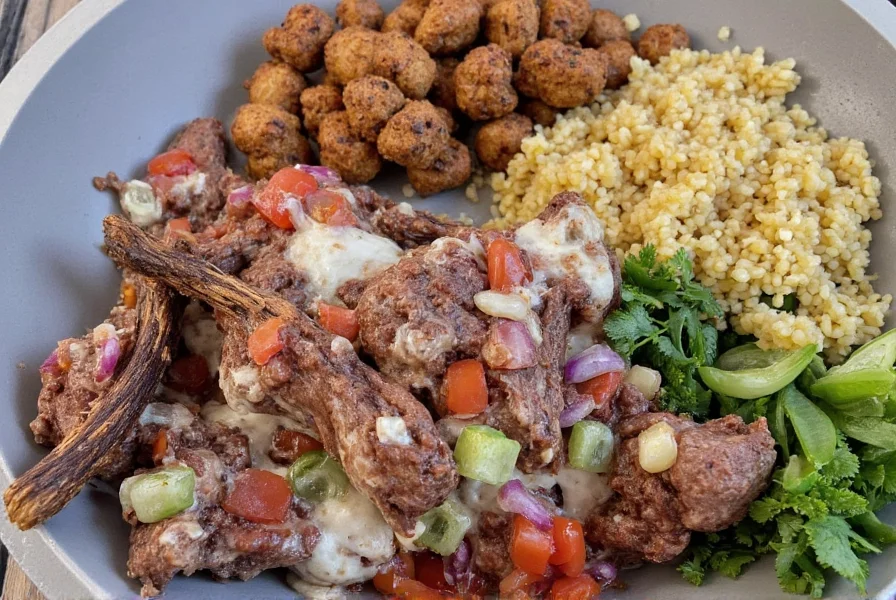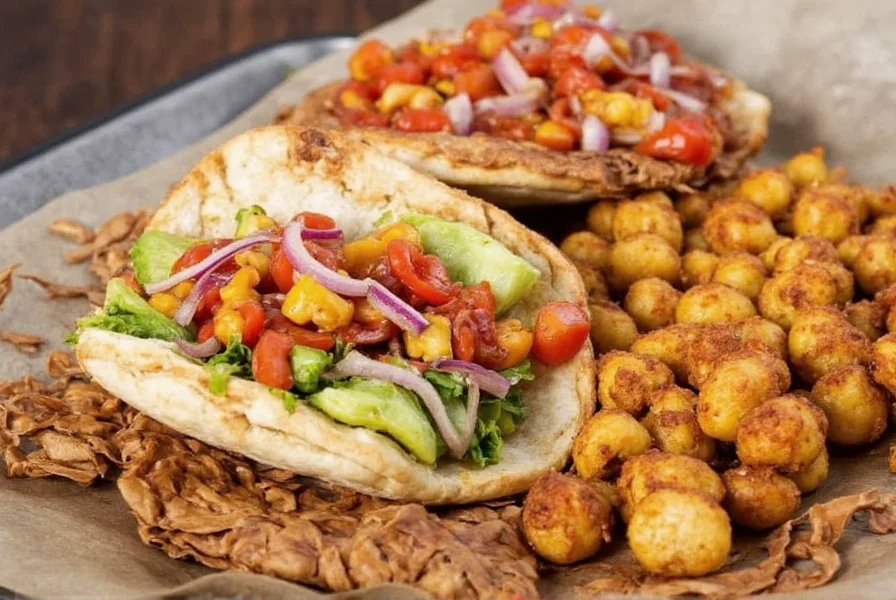Cajun and Creole seasonings are frequently confused, but they have distinct differences in flavor, ingredients, and best uses. Cajun is smoky, peppery, and perfect for meats and grilling, while Creole is herbal, savory, and ideal for seafood and tomato-based dishes. This guide explains exactly how to tell them apart and use them correctly in your cooking.
Both come from Louisiana, both bring bold flavor to your plate, but that’s where the similarities end. Let’s dive into a flavorful comparison between Cajun seasoning and Creole seasoning — with a dash of fun, a pinch of history, and a whole lotta spice knowledge.
Table of Contents
- A Tale of Two Traditions
- The Flavor Face-Off
- Spice Spotlight: The Ingredients That Make the Magic
- Where Do They Belong? Dishes That Define Them
- When to Use Which? Practical Tips for Your Kitchen
- Buying Guide: Picking the Right Bottle for Your Pantry
- Final Verdict: Which One Should You Reach For?
- Frequently Asked Questions
A Tale of Two Traditions
Let’s start with a little backstory because spices are never just about flavor — they carry culture, history, and identity.
Cajun cuisine comes from the French-speaking Acadians who were expelled from Canada and settled in Louisiana. Their cooking is rustic, hearty, and built on what was available in the bayou — smoked meats, game, and wild vegetables.
Creole cuisine, on the other hand, grew out of New Orleans, influenced by Spanish, African, German, and Italian settlers. It’s more refined and often features tomatoes, seafood, and complex sauces.
In short:
- Cajun = Country cooking, bold and smoky
- Creole = City flair, rich and layered

The Flavor Face-Off
The real showdown happens in the flavor department. Let’s break it down in simple terms:
| Characteristic | Cajun Seasoning | Creole Seasoning |
|---|---|---|
| Flavor Profile | Smoky, peppery, earthy | Savory, herbal, tomato-forward |
| Heat Level | Moderate to high (more pepper-based heat) | Mild to moderate (balanced with herbs) |
| Main Base | Garlic, onion, peppers | Herbs (like oregano, thyme), paprika, celery salt |
You might think: "Wait, aren't they both spicy?" Well… yes, but like siblings, they each have their own style.
Spice Spotlight: The Ingredients That Make the Magic
Let's peek inside the bottle. Here's what makes these seasonings tick:
Cajun Seasoning Core Ingredients
- Black Pepper – The star of the show, giving that sharp bite
- Garlic Powder – Adds pungency and depth
- Onion Powder – Sweetness and savoriness
- Cayenne Pepper – Brings the heat
- Paprika – Mild sweetness, adds color
Creole Seasoning Core Ingredients
- Thyme – Earthy, aromatic backbone
- Oregano – Adds Mediterranean warmth
- Garlic Powder – Subtle, not dominant
- Onion Powder – Similar role, more background presence
- Paprika – For color and mild sweetness
- Celery Salt – Signature ingredient, adds brightness and brine
- Basil or Bay Leaf (sometimes) – Adds complexity
So while both share garlic, onion, and paprika, Cajun focuses on pepper power, whereas Creole leans into herbal harmony. For cajun seasoning for shrimp or creole seasoning for gumbo, this difference is key.

Where Do They Belong? Dishes That Define Them
Context matters! Each seasoning has its comfort zone. Let's look at some classic dishes:
Cajun Hits:
- Jambalaya (the original rice dish before Creole got fancy)
- Gumbo (especially the darker, spicier versions)
- Grilled or blackened meats (like chicken, shrimp, or catfish)
- Rice & Sausage Dishes (Andouille is key!)
Creole Favorites:
- New Orleans Gumbo (with okra and tomatoes)
- Jambalaya (Tomato-based, lighter than Cajun style)
- Shrimp Étouffée
- Turtle Soup
- Red Beans and Rice
Think of Cajun as the firestarter, and Creole as the conductor of flavor — both lead the band, just in different genres. For cajun seasoning for chicken or creole seasoning for seafood, this distinction ensures perfect results.

When to Use Which? Practical Tips for Your Kitchen
Still confused? Don't worry — here's your cheat sheet:
Use Cajun Seasoning When:
- You want bold, smoky flavor
- Cooking grilled or fried proteins
- Making meat-heavy dishes
- You crave heat without overwhelming complexity
Use Creole Seasoning When:
- Preparing seafood or vegetable-based dishes
- Adding depth to soups and stews
- You need a balanced blend that doesn't scream spice
- You're working with tomatoes (like pasta, gumbo, or jambalaya)
Pro Tip:
- Make your own blends!
- Store them in clearly labeled jars.
- Experiment — sometimes swapping one for the other creates magic.

Buying Guide: Picking the Right Bottle for Your Pantry
Not all store-bought seasonings are created equal. Here's how to choose wisely:
Top Cajun Seasonings
- Old Bay Cajun Seasoning – Classic name, trusted taste. Great for beginners.
- McCormick Cajun Seasoning – Balanced heat, easy to find in supermarkets.
- Slap Ya Mama Cajun Seasoning – A bit spicier, beloved by home cooks and chefs alike.
- Zatarain's Spicy Cajun Seasoning – Perfect for rice dishes and seafood boils.
Top Creole Seasonings
- Emeril's Essence Creole Seasoning – Chef-approved blend with herbs and paprika punch.
- Le Creuset Creole Seasoning – High-quality brand with clean ingredients.
- Big Easy Cajun & Creole Seasoning – Versatile option that straddles both styles.
- Tony Chachere's Original Creole Seasoning – Iconic Louisiana brand with authentic flavor.
What to Look For:
- No fillers or artificial additives
- Real herbs and spices (oregano, thyme, paprika should be visible)
- Clear labeling (no vague "spices" listed generically)

Final Verdict: Which One Should You Reach For?
There's no winner here — it's more like choosing between jazz and blues; both come from the same place, but they hit different notes.
Reach for Cajun seasoning when you want bold, smoky, and spicy flavor that stands out — especially in grilled meats, stews, and rustic dishes.
Opt for Creole seasoning when you're building a rich, layered dish — think seafood, stews, and anything with tomatoes where subtlety meets satisfaction.
Ultimately, the best seasoning is the one that makes your dish sing. And now you know which tune each one plays.
| Feature | Cajun Seasoning | Creole Seasoning |
|---|---|---|
| Flavor | Peppery, Smoky | Herbal, Savory |
| Base Ingredients | Garlic, Onion, Black & Cayenne Pepper | Herbs, Paprika, Celery Salt |
| Best For | Meats, Jambalaya, Grilling | Seafood, Tomato Dishes, Soups |
| Origin | Rural Louisiana | New Orleans |
Frequently Asked Questions
What is the main difference between Cajun and Creole seasoning?
The primary difference lies in their flavor profiles and ingredient composition. Cajun seasoning is characterized by its bold, peppery, and smoky profile with emphasis on black pepper, cayenne, garlic, and onion. Creole seasoning has a more herbal, balanced flavor with prominent thyme, oregano, paprika, and celery salt. Historically, Cajun comes from rural Louisiana (country cooking) while Creole originates from New Orleans (city cooking).
Can I substitute Creole seasoning for Cajun seasoning?
Yes, but with flavor adjustments. If substituting Creole for Cajun, add extra black pepper and cayenne to boost the heat. When using Cajun instead of Creole, reduce the amount and consider adding thyme, oregano, and celery salt to balance the flavor. For a 1:1 substitution, choose a milder Cajun blend or a spicier Creole version depending on your needs.
Which is spicier: Cajun or Creole seasoning?
Cajun seasoning is generally spicier than Creole seasoning. Cajun relies heavily on black pepper and cayenne for its heat, while Creole uses these ingredients more subtly, balancing them with herbs and other seasonings. However, spiciness can vary by brand – some commercial Creole seasonings might be spicier than certain mild Cajun blends.
Does Creole seasoning contain tomatoes?
No, Creole seasoning itself doesn't contain tomatoes, despite the association with tomato-based dishes in Creole cooking. The seasoning is a dry spice blend. The confusion comes from the fact that traditional Creole cuisine often incorporates tomatoes in dishes (like gumbo or jambalaya), but the seasoning blend is tomato-free. Cajun dishes traditionally don't use tomatoes, though the seasoning also doesn't contain them.
What dishes should I use Cajun seasoning for?
Cajun seasoning shines in hearty, meat-focused dishes like blackened fish or chicken, jambalaya (the non-tomato version), gumbo, and grilled proteins. It's excellent for spice rubs on meats, adding flavor to rice and sausage dishes, and giving a smoky kick to potato salads or roasted vegetables. Its bold profile stands up well to high-heat cooking methods like grilling and blackening.
What dishes should I use Creole seasoning for?
Creole seasoning works best in dishes where you want complex, layered flavors without overwhelming heat. Perfect for seafood preparations, tomato-based dishes like gumbo or jambalaya, soups, stews, étouffée, and even as a seasoning for roasted vegetables. It's also great in marinara sauces, scrambled eggs, or as a finishing sprinkle on finished dishes where you want herbal notes to come through.
Can I make my own Cajun or Creole seasoning?
Absolutely! Homemade blends let you control the heat and freshness. For Cajun: combine 2 tbsp paprika, 1 tbsp garlic powder, 1 tbsp onion powder, 1 tbsp cayenne, 1 tbsp black pepper, and 1 tsp oregano. For Creole: mix 2 tbsp paprika, 1 tbsp garlic powder, 1 tbsp onion powder, 1 tbsp dried oregano, 1 tbsp dried thyme, 1 tbsp celery salt, and 1 tsp black pepper. Store in airtight containers away from light for best flavor retention.
Why are they called Cajun and Creole?
The names reflect their cultural origins. "Cajun" comes from "Acadian" – French colonists expelled from Canada (Acadia) who settled in rural Louisiana. "Creole" refers to people of mixed heritage (European, African, Caribbean) born in colonial Louisiana, particularly New Orleans. These cultural distinctions shaped the regional cuisines and eventually the spice blends associated with them, with Cajun representing country cooking and Creole representing city cooking.











 浙公网安备
33010002000092号
浙公网安备
33010002000092号 浙B2-20120091-4
浙B2-20120091-4